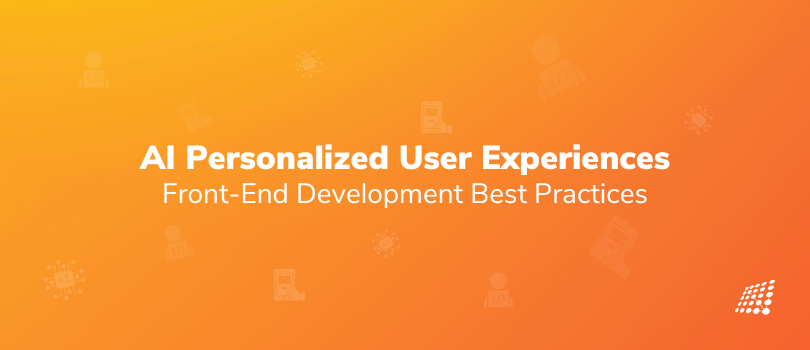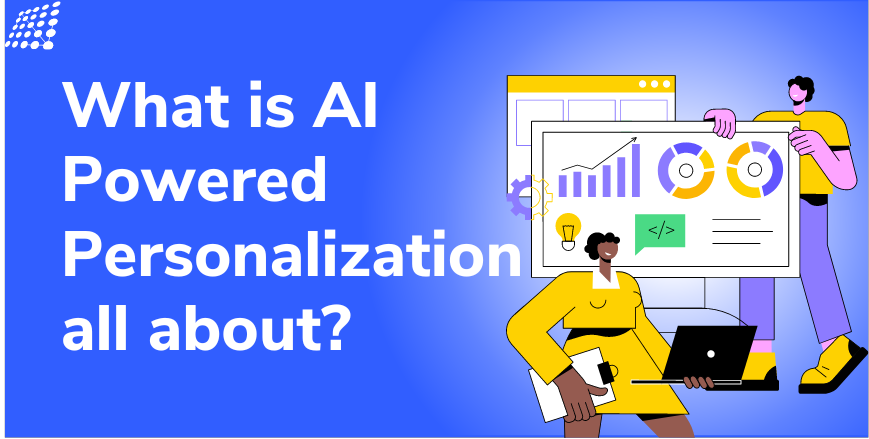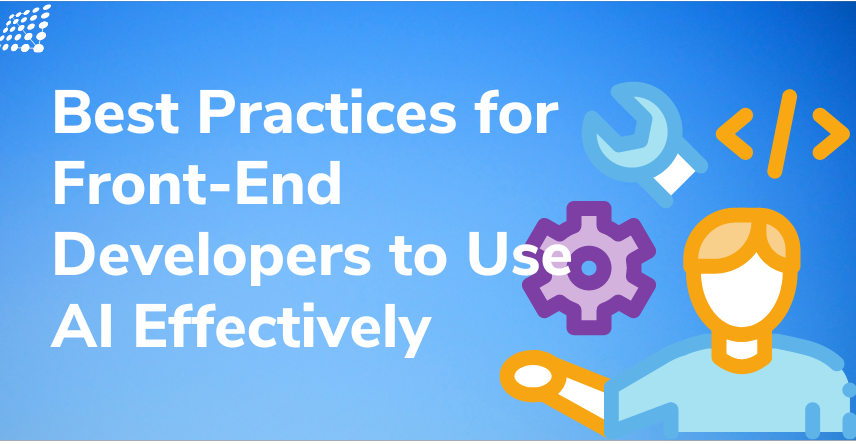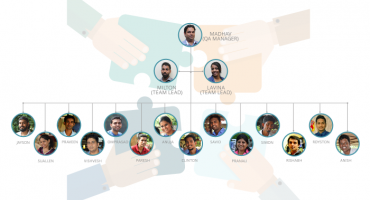Using AI to Personalize User Experiences: Best Practices for Front-End Developers

Show me one company or business that isn't using AI to their advantage, and I’ll tell you why that company is wasting their time! That’s the impact artificial intelligence (AI) has in today’s digital world.
Almost every business sector is embracing AI to enhance efficiency, automate processes, and cut costs. For front-end developers, it grants you the power to tweak and boost the user experience! Isn’t that amazing? After all, customer experience is everything.
Users expect websites and apps to be tailored to their preferences and needs. As a front-end developer, you have the power to create personalized experiences for your users using Artificial Intelligence (AI).
But what is AI personalization for front-end development? How using AI to personalize front-end development helps? How can you enhance the user experience with it, and how can it be implemented by UX designers in a way that helps front-end developers create engaging and relevant user experiences? Well, let’s figure it out!
What is AI-powered Personalization all about?

Imagine a world where everything you interact with is customized just for you - That's AI in a nutshell for you. AI-powered personalization for front-end developers is like having your own personal assistant that knows everything about you - your likes, dislikes, preferences, and even your mood at any given moment. With sophisticated algorithms and real-time data analysis, AI can deliver personalized experiences you never thought imaginable.
Gone are the days of generic recommendations and one-size-fits-all messaging. With the blend of AI and front-end development best practices, you have completely individual and personalized experience that speak to you.
Scenarios where AI powered Personalization Helps
So how to implement AI-powered personalization in UX design?
Scenario 1
You're browsing an e-commerce website when, all of a sudden, as if by magic, you realize that the things being suggested to you are exactly what you need! It almost seems like the website is a close friend because it seems to know you so well. Well, that's the power of AI-powered personalization! The website learns about your likes and interests by examining your browsing and purchasing patterns and other data sources, and recommends products that are more likely to catch your eye.
Scenario 2
Imagine an AI-powered virtual assistant that can communicate with you in your preferred tone and style. Whether you like a formal or casual approach, the virtual assistant can adapt its language to match your preferred style. Or perhaps an AI-powered chatbot that can provide you with personalized support and assistance based on your specific needs and concerns. That’s what AI personalization for front-end development can do. No more generic responses, but rather tailor-made solutions just for you!
How the Power of AI influences UX design
It can be nerve wracking to scroll through a website, trying to find what you need. Now imagine if that same website knew exactly what you were looking for and presented it to you with ease. That’s what AI optimization for front-end development can do!
- Get targeted and relevant recommendations: Not only does personalized content create a more enjoyable and engaging experience for users, but it can also improve the efficiency of the overall experience. Using AI to personalize front-end development can help understand a user's needs and preferences. It can provide targeted and relevant recommendations, saving users time and effort.
- Improved customer loyalty and retention:. For businesses, AI-powered personalization can lead to increased customer loyalty and retention, ultimately resulting in higher sales and revenue. It also allows businesses to stand out in a crowded market, offering a unique and differentiated experience.
- Insights into user behavior: Perhaps most exciting of all, AI personalization for front-end development provides valuable insights into user behavior and preferences, giving businesses the opportunity to better understand and cater to their audience. With real-time analysis of user data, businesses can inform future product development and marketing efforts.
In short, AI-powered personalization is a win-win for both users and businesses. It creates a more enjoyable and efficient experience for users while also improving customer loyalty and revenue for businesses.
Best Practices for Front-End Developers to Use AI Effectively

1. Collect User Data
To personalize user experiences, you need to collect data about your users. This data can include demographic information, search history, and user behavior. Collecting data for AI optimization for front-end development will help you identify patterns and make data-driven decisions to improve the user experience.
2. Use Machine Learning Algorithms
Machine learning algorithms analyze user data to identify patterns and make predictions about user behavior. These algorithms can be used to recommend products, content, and services that are tailored to users' preferences. By using machine learning and AI personalization for front-end development, you can create personalized experiences that are relevant to each user.
3. Implement A/B Testing
A/B testing involves testing two versions of a website or app to determine which version performs better. By implementing A/B testing, you can determine which personalized experiences are most effective for your users. You can incorporate AI optimization for front-end development and implement A/B testing to help you improve user engagement and conversion rates.
4. Focus on User Interface Design
User interface design plays a vital role in creating personalized experiences. Using AI to personalize front-end development can help you design user interfaces that are intuitive and easy to use, so you can create experiences that feel personalized to each user. Focus on creating interfaces that are visually appealing, easy to navigate, and responsive.
5. Use Chatbots and Virtual Assistants
With AI optimization for front-end development, chatbots and virtual assistants can be used to create personalized experiences for users. These tools can be used to answer questions, recommend products, and provide personalized assistance to users. By using chatbots and virtual assistants, you can create experiences that feel tailored to each user's needs.
In conclusion, front-end developers have the power to create personalized experiences for users by implementing AI. By collecting user data, using machine learning algorithms, implementing A/B testing, focusing on user interface design, and using chatbots and virtual assistants, you can create experiences that feel tailored to each user's needs. This makes Using AI to personalize front-end development easy and lucrative! These best practices will help you improve user engagement, increase conversion rates, and drive business results.
In the age of artificial intelligence, personalized experiences have become the norm. However, it's crucial to keep in mind the ethical considerations that come along with it. As a responsible business, you should ensure that your personalization efforts are designed with the utmost regard for user privacy and fairness. Discrimination based on age, gender, race, or any other factor should be avoided at all costs. Remember, AI personalization for front-end development should enhance the user experience, not compromise their rights. So let's strive to create personalized experiences that are not only efficient but also ethical and inclusive.
You can get in touch with our expert front-end developers, who can show you how to harness the power of AI efficiently. You can also reach out to us to create front-end designs that leave you mesmerized!

Developing Leadership Skills and Taking Accountability: How-To Guide

T (Together) E (Everyone) A (Achieves) M (More)


